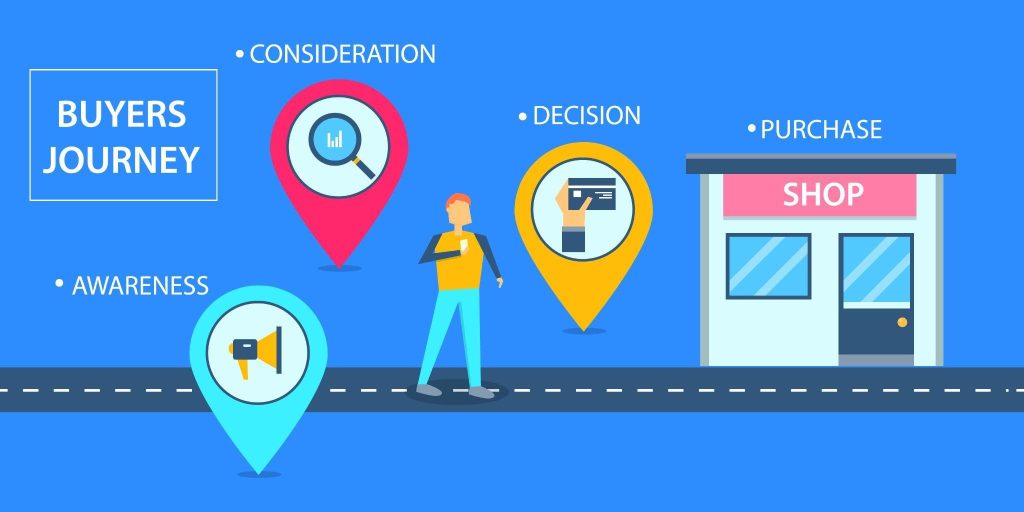Satisfied customers will return to your business, and they’ll tell people if the customer service was excellent. Unhappy customers will not return, which will have a word of mouth knock-on effect, meaning that you lose customers you haven’t even met.
Customer engagement is more important than ever to get right. In today’s hyper-competitive business landscape, customer service through more dynamic engagement is the last great battleground. Even the smallest business can overtake industry giants with the right approach to delivering the highest quality, branded customer service.
Better customer engagement creates greater brand loyalty, higher customer retention rates, and more appeal to new customers. So if you want to start accelerating your growth strategy, it all begins with some smart ways to boost customer engagement.
Map the Customer Journey
The best way to improve your customer engagement is to ensure you understand exactly who your customers are and how they interact with your business. You’ve taken the time to build and create your small business website, and the next step is to map out the customer journey. Use that map to pinpoint the bottlenecks, touchpoints, and pain points they’ll encounter on that journey.
This allows you to learn more about their general behaviour and their needs. And when you’re armed with that knowledge, you can start identifying the perfect moments for the engagement. This is all part of developing your buyer personas, which you can then use to fine-tune your customer engagement strategy.

Mapping the customer journey will give you insights into the needs of your target audience. And when you know more about what they need, you can better position yourself to turn engagement into profit.
Automating Engagement
A piece of universal advice being delivered to every business owner in the world is that automation is your ally in the quest for growth. From accounting software that automates your profit and loss statements to emails that automatically personalise content to match user segmentation, automation cuts down on the repetitive tasks so that you can focus on the actual work.
That’s where chatbots come in. Don’t assume that only big corporations need an automated chatbot service, and don’t fall into the trap of remembering the early bots of 2016. Most people remember those early chatbot examples with a sour aftertaste, but they have evolved extremely quickly. They are now one of the most essential weapons in the entrepreneur’s arsenal.
Customers benefit from chatbots in various ways. They get immediate answers to their queries, get pointed in the right direction (either to a specific product page or through the delivery of an FAQ), and they can get those answers on any channel and in hundreds of languages. When even the smallest business can trade globally, being omnichannel and multilingual while delivering real-time interactions and engagement is only good news. Never overlook how much the right chatbot can utterly transform your customer engagement rates.

Sharing Your Story
Storytelling is a well-known marketing strategy, but it’s often overlooked for the engagement value it offers. Stories will always be more memorable and relatable than a bland marketing message. That’s because they can help humanise your brand, no matter your sector. Storytelling also helps define your audience and find those customers who will align with the values and mission of your business.
The more customers understand the “why” of your business, the more likely they will stay engaged to find out what you do next. They will start to relate to you, follow you on social platforms, and comment on your communication channels. Brand storytelling aims to create a shared vision of the world that you and your target audience can agree on.
Provide Abundant Solutions
There’s a prevalent saying in business that customers don’t buy products; they buy solutions. When customers have a problem they need to resolve, they look for answers. If you have the answers they need, they’ll engage and start moving along the customer journey map. Most customers are as likely to be searching for answers to a question about your sector as they are to be searching for a specific product.
So you need to provide answers to those questions. There are many ways to achieve this, and it all comes down to that consistently relevant phrase, “content is king”. It might be a phrase that most marketers are sick of hearing, but it’s a truism that remains relevant today.

Creating content in blogs, YouTube videos, captivating posts on social media, email newsletters, and even an ever-expanding FAQs page means that you are delivering the answers your customers need. And when the answers to their queries are something you sell, then you can add a link that takes them to the step on the buyer journey.
Develop Your Strategic Customer Engagement Strategy
Any customer engagement strategy will become increasingly complex as it becomes more developed. But the more you develop that strategy, the more information you can gather and use to fine-tune. The result is that you will start to create more opportunities for engagement, and the steps of your engagement strategy will become more defined.
Customer engagement means using interactions on any communication channel to deliver a better, more rewarding, and satisfying customer experience. It takes the right approach and tools to have the most impact, but when you get your customer engagement strategy right, it can quickly become your most crucial key to business growth.



 Bitcoin
Bitcoin  Ethereum
Ethereum  Tether
Tether  XRP
XRP  Solana
Solana  USDC
USDC  Cardano
Cardano  TRON
TRON  Lido Staked Ether
Lido Staked Ether  Avalanche
Avalanche  Toncoin
Toncoin